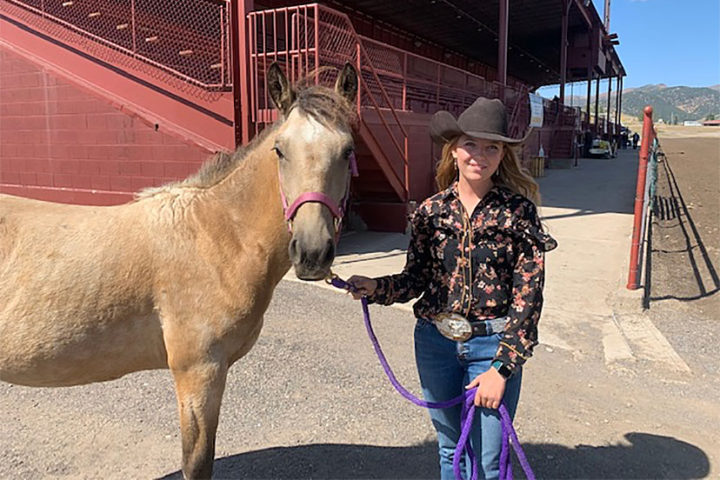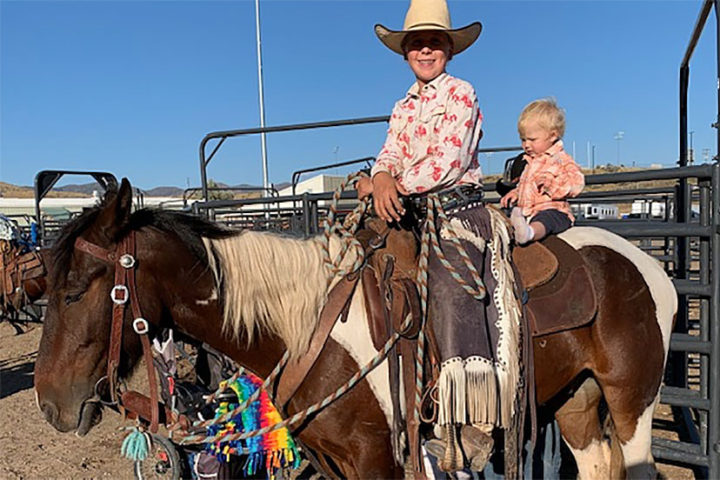By Deirdre Macnab
Years ago, a little girl used to read until late in the night under her sheets with her flashlight. Her favorite books were those with horses, and one of her favorites was titled, Misty of Chincoteague.
Misty was a tiny yellow foal with a little white star who was born into a band of wild ponies on the Island of Assateague. Written by famous horse author and illustrator Marguerite Henry, the story is a true-to-life narrative of the problem of too many wild ponies that were eating away all the vegetation on the little island in the Atlantic Ocean off the coast of Virginia.
While the ponies were popular with the public, the ever-growing population necessitated an annual gather, such that the ponies did not overwhelm the available food supply. The ponies were, and still are today, annually swum across the channel, gathered by local fireman, and then the foals are auctioned off to the tens of thousands who visit the town to witness the exciting event. The little island’s pony population stays healthy because they have enough to eat, and the island is able to sustain the hungry ponies without becoming a desert island.
We have our own Misty story right here in the West. This children’s story resonated with our group of horse-loving community volunteers in Meeker, Colorado, who while admiring our ever growing local wild horses, are also sensitive to the issue of a sustainable population.

While not surrounded by water, our ‘islands’ are delicate, dry ecosystems that succumb easily to drought and overgrazing. With the hotter, drier climate we are seeing, gathering the over-abundance of mustangs is necessary if they are to remain healthy and not overwhelm our ‘islands’ of Bureau of Land Management public land. Our effort was launched three years ago as we wanted to educate the public and also find safe and productive homes for our local fast-growing herd.
It is our hope that this community-based effort might be replicated across the West. But we do want to set some “facts” straight that were published in a recent op-ed by someone who clearly admires the mustangs, but deserves facts based in science and research gathered over the years.
Fact 1: First of all, mustangs are not native species wildlife. They are not a naturally occurring animal in the West. The early “native” horses are long extinct. Those that we see today were left by the Spanish and the Native Americans who inherited them over the years. They are feral, not natural animals in our western ecosystems. They certainly are symbols of our historic and pioneer spirit, and are an iconic reminder of the early culture of the western expansion.
The word mustang itself comes from the Spanish word “ustengo”, which means ‘ownerless horse’ or ‘stray horse.”
Fact 2: The wild horses of the West are far from disappearing. Herd sizes double roughly every five years. They have few natural predators, and unlike deer and elk, are not hunted. Unlike livestock, they are not moved off the range to rest the land, nor limited in numbers, as the cattle we eat are, depending on the health of the range. Left unchecked they simply wreak havoc on the delicate and already dry rangeland ecosystem by overgrazing native plants, expanding invasive weeds and outcompeting other ungulates like elk and deer. And finally, they diminish already very scarce water resources, threatening the livelihood of many other important native species.
As the president of the Meeker Mustang Makeover, which a recent author challenged as capturing mustangs “depriving them of their freedom and breaking them mentally” as they are subjected to “training”, our goal as a community-based, all-volunteer effort is to help the public understand the facts behind our iconic wild horse population. Another goal is to help encourage families and ranches to train and use the extra horses, giving those that remain on the range a better chance of a healthy life. Our hope is to see families find their own “Misty of Meeker” and go home with a foal or horse that they can use as a partner and useful member of their family or ranch.

There are currently roughly 51,772 mustangs, as of March 2021, in long-term captivity. Younger mustangs are very trainable and make very loyal and capable horses. The wild horses in captivity, along with range management, costs the taxpayer $101 million (FY 2020) a year. By encouraging efforts to use dart-based birth control and slow their expansion, and to help horse owners learn how to train them, we can make a more sustainably-sized population and help the excess mustangs become productive and healthy. And when adopted, these horses are moved off the public tax rolls.
Who doesn’t love to see a herd of thundering mustangs galloping across the range? But the facts are clear: without control, we will see a massive desertification and a Dust Bowl emerge again in the American West. Just like in the book “Misty of Chincoteague”, the “Misty of Meeker” can go on to a productive, healthy and long life, leaving a sustainable number to live on as ‘wild’ horses without overwhelming the range for all the other native mammals, birds and plants.

